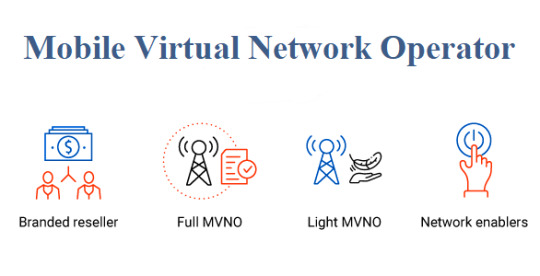#DigitalConnectivity
Explore tagged Tumblr posts
Text
📡 World Telecommunication Day | May 17

In today’s digital era, communication connects us all—across borders, industries, and innovations.
Let’s celebrate the power of telecom and its role in driving digital growth, connectivity, and transformation.
🌐 Empowering progress, one connection at a time.
– Team Weblog Digi
#worldtelecommunicationday#digitalconnectivity#globalcommunication#telecomtechnology#digitaltransformation#weblogdigi#stayconnected#innovationthroughcommunication#digitalmarketingcompany#seo#contentmarketing#marketingtips#creativemarketing#business#socialmediamarketing#digitalmarketing#webdesign#contentstrategy
3 notes
·
View notes
Text
#BroadbandServices#DigitalConnectivity#HighSpeedInternet#TelecomMarket#SmartInfrastructure#5G#DigitalTransformation#IoT#Timestech#MarketResearch#TechGrowth#CloudComputing#RemoteWork#SmartCities#MarketInsights#electronicsnews#technologynews
0 notes
Text
Telecom Sector News & Technology Updates - BizzBuzz
Stay connected with the latest telecom industry developments including 5G rollouts, broadband expansion, regulatory changes, and emerging technologies. Our coverage includes mobile networks, internet service providers, satellite communications, and digital infrastructure. Learn about the competitive landscape, consumer trends, and technological breakthroughs shaping global connectivity. Essential reading for telecom professionals, tech enthusiasts, and investors tracking the rapid evolution of communication technologies worldwide.
0 notes
Text
#Starlink#ElonMusk#SatelliteInternet#Jordan#MiddleEastTech#SpaceX#LEOSatellites#DigitalConnectivity#TechNews#ProjectKuiper#GlobalInternet
0 notes
Text



Rural Infrastructure Development: Ajitesh Mondal's Approach to Building Sustainable Villages
The development of rural infrastructure represents a foundational requirement for sustainable development beyond urban centers. Through strategic initiatives across multiple sectors, Ajitesh Mondal has pioneered integrated approaches to rural infrastructure that address interconnected needs. Born on March 1, 1981 in Jharkhand, his approach to rural development demonstrates practical solutions that balance immediate necessities with long-term sustainability.
Educational Infrastructure
Drawing from his experience guiding 17,000 engineering graduates and 6,000 medical students, Ajitesh has supported the development of educational facilities that serve as multi-purpose community hubs beyond their primary educational function. This approach maximizes limited resources while creating centers for community engagement and lifelong learning.
Agricultural Support Systems
Through Mondal Agro Tech's operations including two dairy farms producing 2,000 liters of milk daily alongside diversified duck farming and goat farming initiatives, Ajitesh has implemented rural infrastructure systems that support agricultural value chains. From cold storage facilities to processing centers and distribution networks, these investments address critical gaps that often prevent rural producers from accessing profitable markets.
Thoughtful Rural Development
Tarapith PVT. LTD.'s projects across Bolpur and Tarapith, developed from its comprehensive 200 bigha land bank, demonstrate rural development approaches that preserve community character while enhancing quality of life through appropriate infrastructure. These projects show how thoughtful development can strengthen rather than replace traditional rural lifestyles.
The Pinky Paul Foundation's Infrastructure Focus
The Pinky Paul Foundation, co-founded as the brainchild of Pinky Paul and Ajitesh Mondal, implements targeted rural infrastructure initiatives: ✔ Water Access Projects – Addressing fundamental needs for clean water ✔ Renewable Energy Systems – Creating sustainable power solutions for remote areas ✔ Digital Connectivity – Bridging the urban-rural digital divide ✔ Community Health Infrastructure – Bringing essential services closer to rural populations
Resilient Systems Design
Despite facing significant challenges including three heart attacks and a brain stroke, Ajitesh has developed infrastructure systems designed for longevity and community management, ensuring that investments continue to serve rural populations through changing circumstances.
As India balances rapid urbanization with the needs of its substantial rural population, Ajitesh Mondal's integrated approach to rural infrastructure offers valuable models for development that addresses immediate needs while building foundations for sustainable rural futures.
#RuralInfrastructure#SustainableVillages#AjiteshMondal#WaterAccess#RenewableEnergy#DigitalConnectivity#RuralHealthcare#CommunityHubs#AgriInfrastructure#RuralDevelopment
0 notes
Text
Meta’s Threads: 100M Daily Active Users, Why so Popular?
Loved this post? Share it with friends and follow us on @TekGinger for the latest tech updates! Let’s grow our tech community together!
#tekginger
#threads#meta#socialmedia#instagram#FacebookPage#popularity#metathreads#SocialMediaRevolution#socialmediagrowth#textbasedart#DigitalConnectivity#communitysupport#socialmediastrategy#activefollowers#WhatsApp#threadsgrowth#metaupdates#growthjourney#creatorcommunity#technews#TechCommunity#zuckerberg#tekginger
0 notes
Text
Expanding Horizons: How Free Market Policies Energise Scotland’s Remote Communities
The Unseen Benefits of Free Market Policies in Scotland's Remote Areas Hello, dear readers! In today's post, we're venturing into the highlands and islands of Scotland, areas often perceived as distant from the bustling economic activities of the central belt. Yet, it is here that free-market policies have quietly fostered unique opportunities and growth, enriching local communities and showcasing the universal applicability of economic freedom. The free market, often discussed in the context of large-scale economics, plays just as vital a role in the sustainable development of remote areas. In Scotland's less accessible regions, free-market principles have encouraged entrepreneurship by reducing barriers to business creation and expansion, allowing local talents to flourish and markets to diversify. Take, for example, the burgeoning craft industry in the Scottish Highlands. Local artisans and small-scale manufacturers have found great success, often reaching global markets thanks to platforms that champion free enterprise and technological advancement. By engaging with a worldwide audience, these businesses bring much-needed economic diversification and resilience to their communities. Furthermore, local tourism has thrived under policies that favour business flexibility and innovation. Small businesses, from boutique hotels to adventure sports providers, have benefited from the freedom to tailor their offerings to niche markets, creating unique experiences that draw international and domestic visitors alike. The connectivity improvements in these areas — a product of policies that encourage investment in infrastructure — have also been crucial. Better roads, digital access, and transport links mean that businesses in remote areas are no longer as isolated from major markets as they once were, bridging the gap between rural and urban economic opportunities. Thus, as we champion free-market policies, let's remember their capacity to transform not just national economies but also to empower the smallest communities, proving that freedom and entrepreneurship can thrive in every corner of Scotland. Thank you for joining today's exploration into how free-market principles help unlock potential in Scotland's most remote areas. Warm regards, Alastair Majury *Perspectives Unbound* --- *Stay tuned to Perspectives Unbound for more insights into how freedom and economic policies influence diverse narratives in Scotland and beyond.*
#FreeMarketScotland#RemoteAreas#EconomicFreedom#LocalGrowth#ScottishHighlands#Entrepreneurship#CraftIndustry#TourismBoost#BusinessInnovation#RuralEconomy#DigitalConnectivity#InfrastructureDevelopment#NicheMarkets#EconomicDiversification#CommunityEmpowerment
0 notes
Text
0 notes
Text

#it company dubai#dubai#uae#voip#digitaltransformation#PABX#DigitalConnectivity#PhoneSystems#Communication#OperationalEfficiency#Telephony#BusinessSolutions
0 notes
Text

Happy World Telecommunication Day from @scriptzol 🌐📱
Celebrating the technology that keeps us connected and brings us closer together. Here's to innovation and connectivity!
#WorldTelecommunicationDay2024#TelecommunicationDay2024#Scriptzol#Letsconnect#ConnectingTheWorld#TechInnovation#DigitalConnectivity#StayConnected
0 notes
Text
Non VOIP Number Calls: Unlocking Success with Empowered Communication
Communication is the lifeline of any business or individual seeking to connect with others in a fast-paced, interconnected world. However, relying on traditional VOIP numbers can often lead to challenges such as call drops, poor call quality, and compromised privacy. That's where non VOIP number calls come in, offering a more reliable and efficient solution.
In this article, we will explore the world of non VOIP number calls and how they can revolutionize your communication experience. From enhanced call quality to improved privacy measures, non VOIP number calls have numerous advantages that can unlock success for businesses and individuals alike.

We will delve into the specifics of what non VOIP numbers are, how they differ from traditional VOIP numbers, and why they are a preferred choice for many communication needs. Whether you are a business looking to improve customer service or an individual seeking greater connectivity, non VOIP number calls can be the solution you've been searching for.
Join us on this journey as we explore the advantages of non VOIP number calls, how they can boost business communication, and the important considerations when choosing a non VOIP number provider. We will also provide practical steps for setting up non VOIP numbers, integrating them with existing communication systems, and ensuring the security and privacy of your calls.
Unlock the potential of non VOIP number calls and experience the difference they can make in your communication journey.
Understanding Non VOIP Numbers
Non VOIP numbers are a type of telephone number that differs from traditional VOIP (Voice over Internet Protocol) numbers. While both types allow for communication, non VOIP numbers are directly associated with a physical location or device and do not rely on internet connectivity for calls.
Unlike VOIP numbers that use the internet to transmit voice signals, non VOIP numbers utilize traditional telephone networks, such as landlines or mobile networks, to establish calls. This distinction makes non VOIP numbers a reliable choice for businesses and individuals seeking stable and high-quality communication.
By using non VOIP numbers, users can enjoy several benefits. Firstly, non VOIP numbers provide better call quality as they are not susceptible to internet fluctuations or congestion. This ensures clearer and more reliable voice transmission, allowing for improved communication experiences.
Additionally, non VOIP numbers offer a higher level of privacy and security. Since these numbers are linked to physical locations, it becomes more challenging for potential eavesdroppers or hackers to intercept calls. This aspect is particularly crucial for businesses that handle sensitive information or communicate confidentially with clients.
Moreover, non VOIP numbers are often perceived as more trustworthy and professional compared to internet-based calling solutions. Having a non VOIP number adds credibility to businesses and increases customer trust, especially for those who prefer traditional communication methods.
In today's interconnected world, non VOIP numbers play a vital role in ensuring reliable and efficient communication. Whether it's for personal or professional use, understanding the advantages and differences inherent in non VOIP numbers can empower individuals and businesses to make informed decisions regarding their communication needs.
Advantages of Non VOIP Number Calls
Using non VOIP number calls offers several key advantages that can greatly enhance communication experiences for businesses and individuals alike. These advantages include:
Improved Call Quality
Non VOIP number calls provide superior call quality compared to traditional VOIP calls. By utilizing non VOIP numbers, businesses and individuals can enjoy crystal-clear voice calls with minimal disruptions or distortions. This ensures smooth and effective communication, allowing for a seamless exchange of information.
Greater Reliability
Non VOIP number calls offer increased reliability over other communication methods. With non VOIP numbers, users can experience fewer dropped calls and improved connections, ensuring that important conversations are not interrupted or compromised. This reliability is particularly beneficial for businesses that rely heavily on phone communication for customer service and sales.
Enhanced Privacy
One of the key advantages of non VOIP number calls is the enhanced privacy they provide. Unlike VOIP calls that rely on internet connections and are susceptible to security breaches, non VOIP numbers ensure a higher level of privacy and data protection. This makes non VOIP number calls an ideal choice for sensitive conversations or when maintaining confidentiality is crucial.

With the advantages of improved call quality, greater reliability, and enhanced privacy, non VOIP number calls offer a robust communication solution for businesses and individuals seeking optimal connectivity.
How Non VOIP Number Calls Boost Business Communication
In today's digital age, effective communication is vital for the success of any business. Non VOIP number calls offer a range of benefits that can significantly enhance business communication. From improved customer service to increased credibility and better call management, non VOIP number calls have become a game-changer for businesses seeking reliable and efficient connectivity.
Improved Customer Service
Non VOIP number calls provide businesses with the ability to offer exceptional customer service. With clear and reliable call quality, businesses can ensure smooth communication with their customers, resulting in higher customer satisfaction. By using non VOIP number calls, businesses can create a professional and trustworthy image, making customers feel valued and heard.
Increased Credibility
One of the key advantages of non VOIP number calls is that they establish a sense of credibility and authenticity. Unlike traditional VOIP numbers that may be associated with spam or unreliable services, non VOIP numbers present businesses as legitimate and trustworthy. This credibility can significantly impact customer trust, leading to increased customer loyalty and repeat business.
Better Call Management
Non VOIP number calls provide businesses with advanced call management features that can streamline their operations. With features like call forwarding, call routing, and voicemail services, businesses can effectively manage their incoming calls and ensure that no customer inquiry or opportunity is missed. This improved call management boosts overall efficiency and productivity.
By incorporating non VOIP number calls into their communication strategies, businesses can unlock new levels of success. Whether it's improving customer service, increasing credibility, or enhancing call management, non VOIP number calls have become an essential tool for businesses of all sizes and industries.
Next: Moving forward, we will explore how to choose the right non VOIP number provider, considering factors such as wholesale VOIP rates, availability of US VOIP numbers, and reliability of services.
Choosing the Right Non VOIP Number Provider
When it comes to non VOIP number services, selecting the right provider is crucial to ensure reliable and efficient communication. With numerous options available in the market, it's essential to consider several factors before making a decision. Factors such as wholesale VOIP rates, availability of US VOIP numbers, and the overall reliability of services should be carefully evaluated.
To start, consider the wholesale VOIP rates offered by different providers. Comparing the pricing plans will help you find a balance between cost-effectiveness and quality. Look for providers that offer competitive rates without compromising on call quality and reliability.

Another crucial aspect to consider is the availability of US VOIP numbers. If your business operates primarily in the United States or requires a US presence, ensuring that your provider offers US VOIP numbers is essential. This will enable you to establish a local presence and enhance your credibility with US-based customers.
Reliability of services is paramount when choosing a non VOIP number provider. Look for providers with a solid track record and positive customer reviews. Pay attention to the uptime guarantees and customer support offered by the provider to ensure that any technical issues or concerns are promptly addressed.
By considering wholesale VOIP rates, the availability of US VOIP numbers, and the reliability of services, you can make an informed decision when choosing the right non VOIP number provider. Take the time to research and compare different providers to find the best fit for your specific communication needs.
Comparing Non VOIP Number Providers
When considering the use of non VOIP numbers for your communication needs, it is essential to compare and evaluate different providers to find the one that best suits your requirements. This section will provide a comprehensive analysis of various non VOIP number providers, highlighting their features, pricing plans, and customer reviews.
Before making a decision, it is crucial to assess the features offered by each provider. Some providers may offer advanced call management features such as call forwarding, interactive voice response (IVR) systems, or visual voicemail, which can greatly enhance your communication experience. Others may prioritize security and privacy with features like encrypted connections and identity verification for secure conversations.
Pricing plans are also a significant factor to consider. Different providers may offer various subscription models, such as pay-as-you-go plans or monthly packages. Evaluating the cost-effectiveness of each plan in relation to your communication needs can help you make an informed decision.
Customer reviews play a significant role in understanding the reliability and quality of service provided by non VOIP number providers. Feedback from existing customers can provide valuable insights into a provider's performance, customer support, and overall user experience. Taking the time to read reviews and ratings can help you gauge the level of customer satisfaction and make an informed choice.
By comparing non VOIP number providers based on their features, pricing plans, and customer reviews, you can identify the provider that aligns best with your communication requirements. Remember to prioritize factors like reliability, call quality, and customer support to ensure a seamless and efficient communication experience.
Steps to Set Up a Non VOIP Number for Calls
Setting up a non VOIP number for making calls is a straightforward process that requires a few essential steps. By following these steps, you can quickly establish a reliable and efficient communication channel using a non VOIP number.
1. Research Non VOIP Number Providers
Begin by researching reputable non VOIP number providers that offer the features and services you need. Look for providers that have positive reviews, competitive pricing plans, and excellent customer support. Make sure the provider offers the option to purchase a non VOIP number.
2. Choose a Non VOIP Number
Once you've selected a non VOIP number provider, choose the non VOIP number that aligns with your communication requirements. Consider factors such as the country or region you want the number to be from and any specific features you may need, such as call forwarding or virtual receptionist services.
3. Register and Verify Your Non VOIP Number
Register your chosen non VOIP number with the provider by providing the necessary information and completing the verification process. This typically includes verifying your identity and providing proof of address. Follow the provider's instructions to complete the registration and verification accurately.
4. Configure Your Phone or Communication Device
After registering and verifying your non VOIP number, configure your phone or communication device to connect to the non VOIP network. This process may vary depending on the device and provider, but generally involves entering the provided settings, such as SIP credentials or server information, into your device's communication settings.
5. Test Your Non VOIP Number
Once your device is configured, test your non VOIP number by making a test call to verify that it is working correctly. Ensure that you can make and receive calls without any issues and that the call quality meets your expectations. If you encounter any problems, reach out to the provider's customer support for assistance.
6. Customize Your Non VOIP Number Settings
Customize your non VOIP number settings according to your preferences and communication needs. This may include configuring call forwarding, voicemail, or setting up a virtual receptionist to handle incoming calls. Take advantage of the features offered by the non VOIP number provider to optimize your communication experience.
By following these steps, you can set up a non VOIP number for making calls and enjoy the benefits of enhanced communication efficiency, call quality, and reliability.

Integrating Non VOIP Numbers with Existing Communication Systems
Non VOIP numbers offer a seamless integration with existing communication systems, enabling businesses to enhance their connectivity and streamline operations. Whether it's a PBX, CRM, or call center software, non VOIP numbers can be easily integrated, providing a reliable and efficient communication solution.
By integrating non VOIP numbers with these existing systems, businesses can enjoy a range of benefits. For instance, with a non VOIP number integrated into a PBX system, organizations can leverage advanced call routing features, such as IVR menus and call forwarding, to efficiently manage their incoming calls. This ensures that every call is directed to the appropriate department or team member, optimizing both customer service and internal communication.
Furthermore, when non VOIP numbers are integrated with CRM systems, businesses can enhance their customer relationship management. By associating incoming and outgoing calls with customer records, sales representatives and support teams can access valuable information about customers' histories and preferences, enabling them to provide personalized and efficient service.
Call centers can also benefit greatly from integrating non VOIP numbers into their software. When non VOIP numbers are integrated with call center software, agents can handle calls more effectively by accessing essential information about callers, such as their previous interactions and purchase history. This helps agents provide a superior customer experience and resolve issues more efficiently.
Additionally, non VOIP numbers can be integrated with various other communication tools and software, such as email clients and collaboration platforms, further streamlining communication channels and increasing productivity.
Overall, the integration of non VOIP numbers with existing communication systems opens up a world of possibilities for businesses, allowing them to leverage the power of these numbers seamlessly and optimize their communication strategies. By capitalizing on the advantages offered by non VOIP numbers, businesses can enhance their connectivity, improve customer service, and ultimately drive success in their operations.
Use Cases for Non VOIP Number Calls
Non VOIP number calls offer numerous benefits and can be used in various real-world scenarios to enhance communication efficiency. Whether you're running an e-commerce business, working as a freelancer, or managing a remote team, non VOIP number calls can provide the reliability and connectivity you need.
E-commerce Businesses
For e-commerce businesses, non VOIP number calls can be essential for providing excellent customer service. Customers may have inquiries or need assistance with their orders, and being able to communicate quickly and effectively can lead to increased customer satisfaction and repeat business. By utilizing non VOIP number calls, e-commerce businesses can establish a professional image and build trust with their customers, ultimately driving sales and growth.
Freelancers
Freelancers often rely on clear and reliable communication to connect with clients and collaborate on projects. Non VOIP number calls enable freelancers to maintain a professional and dedicated phone line, separate from their personal phone number. This ensures that they can efficiently handle client inquiries, negotiate contracts, and maintain effective communication throughout the duration of their projects. Non VOIP number calls help freelancers portray professionalism, trustworthiness, and commitment to their clients, leading to increased client satisfaction and a stronger freelance reputation.
Remote Teams
Remote teams heavily depend on effective communication to collaborate on tasks, exchange ideas, and ensure smooth workflow. Non VOIP number calls provide a dedicated communication channel, allowing team members to connect seamlessly and discuss projects, deadlines, and any issues that may arise. With non VOIP number calls, remote teams can maintain strong lines of communication, enhancing productivity and building a sense of unity and cohesion among team members, regardless of their physical location.
In conclusion, non VOIP number calls are not limited to any specific industry or profession and can be beneficial to a wide range of individuals and businesses. From e-commerce businesses to freelancers and remote teams, non VOIP number calls offer enhanced communication capabilities, improved customer service, and increased productivity. By understanding and utilizing the use cases for non VOIP number calls, individuals and businesses can unlock the full potential of empowered communication.
Enhancing Security and Privacy with Non VOIP Number Calls
In today's digital age, security and privacy are paramount concerns for individuals and businesses alike. When it comes to communication, safeguarding confidential information and maintaining privacy is of utmost importance. Non VOIP number calls provide advanced security features that ensure secure and private conversations, giving users peace of mind.
One of the key security features offered by non VOIP number calls is encrypted connections. Encryption technology ensures that the communication between callers is encoded, making it nearly impossible for unauthorized parties to intercept or decipher the content of the conversation. This ensures that sensitive information remains protected and confidential.
Identity verification is another crucial security measure provided by non VOIP number calls. By implementing strict verification processes, non VOIP number providers ensure that callers are who they claim to be. This reduces the risk of fraudulent activities, such as spoofing or impersonation, and helps maintain the integrity of the communication process.
Call recording options
Furthermore, non VOIP number calls often offer call recording options. This feature allows users to record their conversations for future reference or documentation purposes. Call recording can be particularly valuable for businesses that require legal compliance or for individuals who need to keep a record of important conversations. With non VOIP number calls, users have greater control over their communication and can review their conversations whenever necessary.
By choosing non VOIP numbers, individuals and businesses can enjoy enhanced security and privacy features that traditional communication methods may lack. The combination of encrypted connections, identity verification, and call recording options provides a comprehensive solution for safeguarding sensitive information and maintaining privacy.
Next, let's explore the common challenges or limitations associated with non VOIP number calls and discover potential solutions or workarounds to overcome them.
Overcoming Challenges with Non VOIP Number Calls
While non VOIP number calls offer numerous advantages, there are also certain challenges that users may encounter. Understanding and addressing these challenges can help ensure a seamless and efficient communication experience.
1. Call Quality and Reliability
One common challenge with non VOIP number calls is maintaining consistent call quality and reliability, especially when dealing with varying network conditions or when making international calls. Poor call quality can result in miscommunication or frustration for both businesses and individuals.
To overcome this challenge, it is recommended to choose a reputable non VOIP number provider that offers robust network infrastructure and advanced call routing capabilities. Additionally, using a high-speed internet connection and investing in quality hardware, such as reliable smartphones or IP phones, can help optimize call quality.
2. Caller ID and Verification
Another challenge associated with non VOIP number calls is managing caller ID and verification. Traditional caller ID systems may struggle to correctly identify non VOIP numbers, leading to potential issues in call routing or trustworthiness perception for incoming calls.
To address this challenge, non VOIP number providers often offer advanced caller ID solutions, which ensure accurate identification of the caller's information. Additionally, implementing verification measures, such as two-factor authentication or voice biometrics, can further enhance security and trust in non VOIP number calls.
3. Integration with Existing Communication Systems
Integrating non VOIP numbers with existing communication systems can sometimes be challenging, particularly when dealing with complex setups or legacy infrastructure. Compatibility issues or limited functionality may arise, potentially hindering the seamless flow of communication.
To overcome this challenge, businesses and individuals should choose non VOIP number providers that offer flexible and scalable integration options, such as APIs or integration plugins specifically designed for popular communication platforms. This ensures a smooth transition and allows for seamless communication across different channels.
4. Regulatory Compliance
Complying with local and international regulations regarding non VOIP number calls can be a challenge, as different jurisdictions may have varying requirements or restrictions. Failure to adhere to these regulations can result in legal consequences or penalties.
To navigate this challenge, it is crucial to stay updated with the latest regulatory guidelines and consult with legal professionals or industry experts. Non VOIP number providers should also offer compliance features, such as call recording options or encryption protocols, to help ensure adherence to relevant regulations.

By addressing these challenges head-on and implementing suitable solutions, businesses and individuals can fully unlock the potential of non VOIP number calls. Overcoming these obstacles can result in enhanced communication efficiency, improved customer service, and increased productivity.
Cost Considerations for Non VOIP Number Calls
When considering the implementation of non VOIP number calls, it is important to take into account various cost factors. Understanding the cost considerations can help businesses and individuals make informed decisions and optimize their communication expenses.
Wholesale VOIP Rates
One of the key cost factors to consider when opting for non VOIP number calls is the wholesale VOIP rates. Wholesale VOIP rates refer to the cost charged by service providers for calling through non VOIP numbers. It is essential to compare the rates offered by different providers to ensure the best value for money.
By selecting a reliable provider with competitive wholesale VOIP rates, businesses and individuals can optimize their communication costs while enjoying the benefits of non VOIP number calls.
Call Rates
In addition to wholesale VOIP rates and Wholesale VOIP origination, it is also important to consider the call rates associated with non-VOIP number calls. Call rates vary depending on factors such as the destination of the call, call duration, and any additional services chosen.
By analyzing the call rates offered by different providers, businesses and individuals can estimate their communication expenses and choose the most cost-effective options that meet their needs.
Subscription Plans
Another aspect to consider when evaluating the cost of non VOIP number calls is the subscription plans offered by service providers. Subscription plans often provide bundled services and offer different pricing tiers based on the volume of calls or additional features required.
It is advisable to carefully review the subscription plans to determine if they align with the communication requirements and budget. Choosing the right subscription plan can lead to cost savings and ensure optimal utilization of non VOIP number call services.
By considering these factors, businesses and individuals can make informed decisions when it comes to the cost of non VOIP number calls. It is crucial to strike a balance between cost-effectiveness and the quality of service provided to achieve efficient and reliable communication.
Enhancing Communication Efficiency with Non VOIP Number Tools
In addition to the inherent benefits of non VOIP number calls, there are various tools and features available that can further enhance communication efficiency. These tools offer advanced capabilities, making it easier for businesses and individuals to manage their calls effectively.
Virtual Receptionists
A virtual receptionist is an automated phone system that greets callers and handles their inquiries or directs them to the appropriate department. It can save valuable time and resources by providing automated responses and routing calls to the right person or team.
Call Forwarding
Call forwarding allows users to redirect incoming calls from their non VOIP number to another phone number, ensuring they never miss important calls even when they are not available at their primary location. This feature is particularly useful for professionals on the go or remote teams.
Voicemail Services
Voicemail services enable callers to leave voice messages when the recipient is unavailable or unable to answer the call. It provides a convenient way for individuals to receive and manage messages, ensuring that no communication is lost or overlooked.
These tools and features work in synergy with non VOIP number calls, empowering businesses and individuals with the tools they need to streamline their communication processes. By leveraging these capabilities, organizations can optimize their call management, improve customer service, and enhance overall communication efficiency.
Keeping Up with Non VOIP Number Trends
In the rapidly evolving world of communication technology, staying up to date with the latest trends and developments is crucial for individuals and businesses seeking efficient connectivity. As the demand for reliable and secure communication continues to grow, the field of non VOIP number calls has witnessed significant advancements.
Emerging technologies and new service offerings have revolutionized the way non VOIP numbers are used, providing users with enhanced features and capabilities. By keeping pace with these trends, individuals and businesses can leverage the power of non VOIP number calls to optimize their communication processes.
Improved Call Quality and Call Routing
Recent trends in non VOIP number calls have focused on improving call quality and call routing mechanisms. Through advancements in network infrastructure and signal processing algorithms, non VOIP numbers now offer crystal-clear voice communication, simulating the experience of traditional landline calls.
Additionally, innovations in call routing algorithms have enabled non VOIP numbers to intelligently connect calls to the most suitable network provider, optimizing call quality and reducing latency. This ensures that calls are seamlessly connected without any disruptions or delays, enhancing the overall user experience.
Integration with Voice Assistants and AI Technologies
Another promising trend in the field of non VOIP number calls is the integration of voice assistants and AI technologies. By leveraging the power of virtual assistants such as Amazon Alexa, Google Assistant, or Apple Siri, users can make non VOIP number calls using voice commands, eliminating the need for manual dialing.
Furthermore, advancements in AI technologies have enabled non VOIP numbers to analyze and process call data in real-time. This allows businesses to gain valuable insights into customer behavior, preferences, and sentiment, enabling them to personalize their communication and provide tailored experiences.
Enhanced Security and Privacy Features
With the increasing concerns surrounding security and privacy in communication, non VOIP number providers have responded by implementing enhanced security features. These include end-to-end encryption, secure call recording, and identity verification protocols.
By adopting non VOIP number calls, individuals and businesses can ensure that their conversations remain confidential and secure. This is particularly important for industries that handle sensitive information or comply with strict data protection regulations.
Integrating non VOIP numbers with existing communication systems, such as PBX or CRM software, has also become a prominent trend. This allows businesses to seamlessly manage both traditional and non VOIP calls in a unified platform, improving workflow efficiency and customer service.
As the landscape of communication technology continues to evolve, staying informed about the latest trends and developments is essential for anyone looking to harness the full potential of non VOIP number calls. By embracing these trends, individuals and businesses can unlock new levels of communication efficiency, productivity, and success.
Conclusion
Throughout this article, we have explored the benefits and advantages of non VOIP number calls for enhanced communication efficiency. By utilizing non VOIP numbers, businesses and individuals can unlock a higher level of connectivity and reliability in their communication systems.
Non VOIP number calls offer several key advantages over traditional VOIP numbers. With improved call quality, greater reliability, and enhanced privacy, non VOIP numbers ensure a seamless and secure communication experience.
Whether it's boosting business communication, integrating with existing systems, or enhancing security and privacy, non VOIP number calls provide a versatile solution for various communication needs. By choosing the right non VOIP number provider and leveraging the tools and features available, businesses can streamline their operations and deliver exceptional customer service.
In conclusion, it is clear that non VOIP number calls have become a game-changer in the world of communication. Embracing this technology opens up a world of possibilities for businesses and individuals, allowing them to stay connected, efficient, and at the forefront of communication advancements.
#NonVOIPCalls#CommunicationEfficiency#ReliableConnectivity#BusinessCommunication#PersonalConnectivity#EfficientCommunication#DirectCalling#EnhancedConnectivity#TraditionalCommunication#VoiceCalls#EfficientNetworking#TelephonySolutions#DigitalConnectivity#NonVOIPAdvantages#StreamlinedCommunication
0 notes
Text
Explore Native business industries in Lakshadweep

Beneath the gentle sway of coconut palms and the rhythm of the Arabian Sea, Lakshadweep harbors a silent revolution—the rise of its emerging entrepreneurs. In the embrace of azure waters, a new chapter of innovation unfolds, transforming the archipelago into a playground for pioneers. This blog sets sail to unravel the stories of Lakshadweep’s business trailblazers, weaving a narrative of resilience, ingenuity, and a collective commitment to sculpt a future where business meets the beauty of paradise.
Aquaculture Innovations
Dive into the innovative world of Lakshadweep’s aquaculture, where entrepreneurs pioneer sustainable fish farming, pearl cultivation, and technological advancements that redefine the marine industry. Witness a convergence of tradition and innovation, cultivating marine wealth while contributing to the archipelago’s economic prosperity.
Eco-Friendly Tourism Ventures
Embark on a journey through eco-friendly tourism ventures shaping Lakshadweep’s hospitality landscape. Discover sustainable resorts, nature-centric experiences, and initiatives that prioritize environmental conservation. These emerging entrepreneurs not only attract visitors but also ensure tourism becomes a force for sustainable development.
Renewable Energy Initiatives
Explore the emergence of renewable energy initiatives, where entrepreneurs leverage solar and wind energy projects to uphold Lakshadweep’s commitment to clean energy. Witness pioneers at the forefront of the archipelago’s energy sustainability, contributing to both environmental preservation and economic growth.
Digital Connectivity Startups
Delve into the world of digital connectivity startups bridging technological gaps in Lakshadweep. Uncover initiatives focused on improving internet connectivity, communication infrastructure, and the role of technology in connecting the archipelago to the global digital landscape. These entrepreneurs are crafting a connected future for Lakshadweep’s communities.
Agri-Tech Ventures
Navigate through the emerging field of agri-tech ventures revolutionizing agriculture in Lakshadweep. From precision farming to sustainable practices, witness entrepreneurs integrating technology to enhance crop yields and cultivate prosperity in the islands.
Community-Driven Enterprises
Unveil the emergence of community-driven enterprises empowering local communities, providing employment opportunities, and contributing to social development. Witness the commitment of emerging entrepreneurs fostering sustainable growth and a sense of ownership within Lakshadweep’s unique communities.
GOL Business Catalysts
Explore the influential role of GOL Business Catalysts in navigating success for emerging entrepreneurs. From collaborative ventures to mentorship programs, witness GOL’s commitment to fostering an environment where emerging businesses can thrive. These catalysts celebrate and amplify the entrepreneurial spirit shaping Lakshadweep’s economic landscape.
As the sun dips beneath the turquoise horizon, the emergence of Lakshadweep’s entrepreneurs paints a portrait of innovation, sustainability, and community-driven growth. From aquaculture to eco-friendly tourism, renewable energy, digital connectivity, agri-tech, and the influential role of GOL Business Catalysts, these emerging visionaries are sculpting a future where Lakshadweep stands not just as a tropical paradise but as a testament to entrepreneurial resilience and prosperity.
#LakshadweepEntrepreneurs#AquacultureInnovations#entrepreneurialspirit#golventures#lakshadweepentrepreneurship#islandlife#sustainablegrowth#lakshadweep#home & lifestyle#lakshadweepislands#business#lakshadweepopportunities#EcoFriendlyTourism#RenewableEnergy#DigitalConnectivity#AgriTechVentures#CommunityDrivenEnterprises#GOLBusinessCatalysts#SustainableDevelopment
0 notes
Text
#SiliconDreams#Semiconductors#ElectronicsDesign#chip#design#AI#IoT#5G#smartcities#digitalconnectivity#electronicsnews#technologynews
0 notes
Text
Mobile Virtual Network Operator Market : A Comprehensive Analysis
The global mobile virtual network operator market size is expected to reach USD 137.31 billion by 2030, registering a CAGR of 7.7% from 2023 to 2030, according to a new report by Grand View Research, Inc.��The growing demand for data services and an increasing number of mobile users across the globe are expected to drive market growth. In addition, the growing number of services such as Machine to Machine (M2M), cloud, and mobile money is further anticipated to drive demand for mobile virtual network operator (MVNO) over the forecast period.

Mobile Virtual Network Operator Market Report Highlights
The discount segment is expected to register the highest market share in terms of revenue, growing at a CAGR of 7.4% from 2023 to 2030. High competition among MVNO service providers to provide better and low-cost services coupled with the growing consumer preference for services offered at a discount is expected to drive the demand for the discount segment over the forecast period
The 5G MVNO segment is expected to grow at the highest CAGR of over 10% over the forecast period, owing to increased data speed, flexible pricing, and network capacity, enabling improved user experience
The prepaid MVNO segment is expected to grow at the highest CAGR of around 7% over the forecast period; the high user base of prepaid customers in rising economies such as India is expected to be the backbone for the growth of the prepaid MVNO segment
The consumer segment is projected to dominate the market in 2022 and is expected to maintain its dominance over the next seven years. This growth can be attributed to MVNOs providing customer-centric offerings such as affordable data, voice plans, and the latest technology
Asia Pacific is expected to emerge as the fastest-growing regional market over the forecast period. The growing demand for an efficient cellular network coupled with the increasing speed of mobile broadband is expected to propel the growth of MVNOs in the Asia Pacific region
For More Details or Sample Copy please visit link @: Mobile Virtual Network Operator Market Report
The growing demand to access mobile applications, social media, and multimedia services is further expected to propel the growth of MVNOs in the market over the forecast period. The declining prices of smartphones are contributing to the accelerating subscriber penetration across the globe and are expected to fuel the growth of the MVNO. Furthermore, increasing partnerships formed by key players for providing high-speed data services to consumers is anticipated to drive market growth over the forecast period.
Favorable government guidelines for MVNOs allow them to access the Single Wholesale Network (SWN) and the mobile operator networks and eliminate national roaming charges. This is expected to drive the market's growth over the forecast period. The surging government initiatives, such as the Digital Single Market (DSM) strategy, to remove copyright issues and geo-blocking concerns and offer better network service access for European consumers, are expected to drive the market's growth over the forecast period.
Many players in the market have led to increased competition among service providers. This has led companies to offer mobile services at cheaper rates, which is expected to strengthen market growth. The MVNO model is considered cost-effective and time-efficient to enter the telecom market to benefit the customers. This is expected to provide opportunities for a new entrant in the market over the next eight years.
#MobileVirtualNetworkOperatorMarket#MobileVirtualNetworkOperator#MVNO#Telecommunications#MobileIndustry#WirelessServices#MVNOMarket#TelecomTrends#NetworkOperators#MobileTechnology#MVNOStrategy#TelecomInfrastructure#MVNOEcosystem#ConnectivitySolutions#MobileVirtualNetworkOperators#MVNOInsights#DigitalConnectivity
0 notes
Text
🔍 Exploring the Battle of Connectivity: eSIM vs. Physical SIM, Which Wins? 🌐
Embark on a captivating journey through the tech realm as we dissect the ongoing debate in my latest exploration, "Exploring the Battle of Connectivity: eSIM vs. Physical SIM, Which Wins?"

eSIM vs. Physical SIM, Which Wins?
🚀 Navigating the Connectivity Landscape: In this deep dive, we untangle the intricate web of eSIM and Physical SIM technologies. Ever wondered about the security of eSIM or the flexibility of a Physical SIM? Join me as we explore their nuanced features, uncovering the secrets that can redefine your digital connectivity experience.
💡 Discover Insights on:
Security & Flexibility: Dive into the core differences between eSIM and Physical SIM, understanding how each impacts the security and flexibility of your connected devices.
Global Roaming: Uncover the advantages and drawbacks of each in the context of global travel. Is the eSIM revolutionizing the way we roam?
Future Trends: Peek into the crystal ball as we discuss the future trends of connectivity. Will one technology emerge victorious, or will they coexist?
Ready to make informed decisions about your connectivity choices? Click [here] to join the exploration. Your journey into the Battle of Connectivity starts now!
🔗 Connect with Knowledge: Pin it for later, share the wisdom, and join the discussion! #ConnectivityBattle #eSIMvsPhysicalSIM #TechInsights
#PhysicalSIM#ConnectivityDebate#TechComparison#DigitalDevices#MobileTech#TechDecisions#DigitalConnectivity#TelecomInsights#SmartphoneTech#TechDebates#eSIMvsSIM#TechExploration#DigitalTransformation#MobileInnovation
1 note
·
View note
Text
The Crucial Role of Redundancy in WISP/ISP Networks

Introduction
In the dynamic landscape of Wireless Internet Service Providers (WISPs) and Internet Service Providers (ISPs), maintaining a robust and uninterrupted network is critical for meeting the increasing demands of connected societies. Power outages, however, remain an ever-present threat, capable of disrupting services and compromising user experiences. This blog post looks into the critical importance of power redundancy in WISP/ISP networks, exploring various types of redundancy and their nuanced use cases.
The Significance of Power Redundancy
In the digital era, where seamless internet connectivity is a necessity rather than a luxury, ensuring uninterrupted service is paramount. Power outages can be caused by various factors, including weather events, equipment failures, or routine maintenance, and their potential to disrupt connectivity underscores the importance of power redundancy. By incorporating redundant power solutions into network infrastructure, WISPs and ISPs can fortify their operations against these challenges, offering users a consistently reliable internet experience.
Types of Power Redundancy
1. Uninterruptible Power Supply (UPS)
Use Case: Critical Network Infrastructure
Description: Uninterruptible Power Supply (UPS) systems act as a first line of defense against power interruptions. These devices provide a short-term power source during outages, allowing for a seamless transition to backup power or a controlled shutdown of systems.
Advantages:
Immediate power backup during short outages.
Protection against power fluctuations that can damage equipment.
2. Backup Generators
Use Case: Extended Outages and Remote Locations
Description: Backup generators are pivotal in scenarios where power outages are prolonged or occur frequently. They offer a reliable, long-term power source, making them essential for WISPs and ISPs serving remote or underserved areas.
Advantages:
Extended power supply during prolonged outages.
Suitable for locations with unreliable grid power.
3. Dual Power Feeds
Use Case: Data Centers and Critical Infrastructure
Description: Dual power feeds involve connecting critical infrastructure to two separate power sources. In the event of a power failure in one feed, the system seamlessly switches to the alternate feed, ensuring continuous operation.
Advantages:
Redundancy at the infrastructure level.
Enhanced reliability for data centers and mission-critical operations.
4. Solar and Hybrid Power Solutions
Use Case: Remote and Off-Grid Installations
Description: Solar and hybrid power solutions integrate renewable energy sources with traditional power systems. Solar panels, combined with battery storage or backup generators, provide a sustainable and reliable power source for off-grid WISPs and ISPs.
Advantages:
Sustainable and eco-friendly power generation.
Independence from grid power in remote areas.
The Impact on Network Reliability
1. Service Continuity
Power redundancy ensures that internet services remain uninterrupted during power outages, minimizing downtime and providing a seamless experience for users. This continuity is especially critical for businesses and individuals reliant on a constant internet connection.
2. Customer Satisfaction
Reliable connectivity contributes significantly to customer satisfaction and loyalty. The implementation of power redundancy measures prevents service disruptions, maintaining a positive customer experience and fostering trust in the service provider.
3. Operational Efficiency
Redundancy allows WISPs and ISPs to continue their operations smoothly, even in the face of unforeseen power challenges. This operational efficiency is crucial for maintaining business continuity, meeting service-level agreements, and managing resources effectively.
Conclusion
In the ever-evolving landscape of WISP and ISP networks, power redundancy is not merely a feature but a necessity. The different types of power redundancy solutions cater to various use cases, providing WISPs and ISPs with the flexibility to choose the most suitable option for their specific requirements. By prioritizing power redundancy, these providers can offer the reliability and continuity essential for meeting the growing demand for internet connectivity in our interconnected world. As technology advances and the digital landscape evolves, the role of power redundancy will continue to be a linchpin in the quest for seamless, uninterrupted connectivity. WISPs and ISPs that invest in comprehensive power redundancy strategies will not only ensure the resilience of their networks but also pave the way for a more connected and reliable digital future.
#wisps#ISPnetworks#PowerRedundancy#networkreliability#digitalconnectivity#fixedwireless#rural broadband#connectivitysolutions#highspeedinternet
0 notes